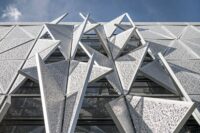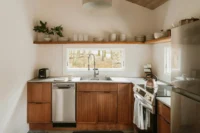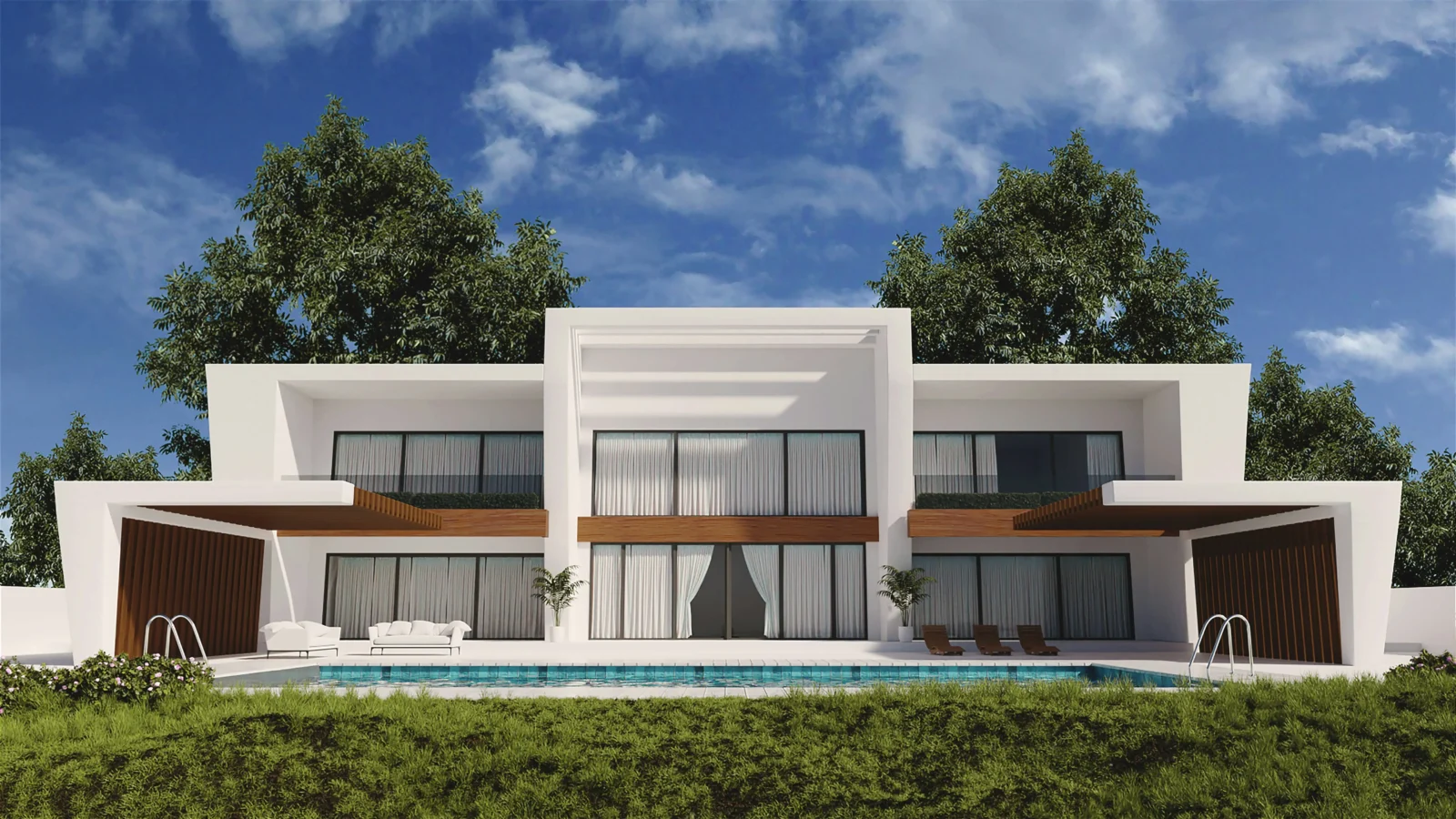- Home
- Articles
- Architectural Portfolio
- Architectral Presentation
- Inspirational Stories
- Architecture News
- Visualization
- BIM Industry
- Facade Design
- Parametric Design
- Career
- Landscape Architecture
- Construction
- Artificial Intelligence
- Sketching
- Design Softwares
- Diagrams
- Writing
- Architectural Tips
- Sustainability
- Courses
- Concept
- Technology
- History & Heritage
- Future of Architecture
- Guides & How-To
- Art & Culture
- Projects
- Interior Design
- Competitions
- Jobs
- Store
- Tools
- More
- Home
- Articles
- Architectural Portfolio
- Architectral Presentation
- Inspirational Stories
- Architecture News
- Visualization
- BIM Industry
- Facade Design
- Parametric Design
- Career
- Landscape Architecture
- Construction
- Artificial Intelligence
- Sketching
- Design Softwares
- Diagrams
- Writing
- Architectural Tips
- Sustainability
- Courses
- Concept
- Technology
- History & Heritage
- Future of Architecture
- Guides & How-To
- Art & Culture
- Projects
- Interior Design
- Competitions
- Jobs
- Store
- Tools
- More
Creating Photorealistic 3D Architectural Renderings
Discover how to craft strikingly realistic 3D architectural renderings by blending drone photography with 3D modeling, and explore expert advice on picking the right software tools. Dive deeper into the world of photorealism in architecture, and learn the significance of weather conditions and professional photography in enhancing render quality.

In the highly competitive field of architectural design, realistic 3D rendering has become a vital skill. It’s a modern technique that creates images and videos so lifelike, they’re nearly identical to a photograph or recorded video. The ability to master this technique can set you apart and elevate your work to new heights.
We’ve gathered some expert advice to help you up your rendering game. It all starts with a sketch. This simple step can keep you focused on your original idea and ensure the details align with the overall composition. But there’s more to it than just sketching. It’s also about understanding and using lens effects to add depth and atmosphere to your scenes.
Of course, it’s crucial to use these effects cautiously. Overdoing them can detract from the quality of your renders. But when used correctly, they can add a touch of cinematic realism that truly brings your designs to life.

Table of Contents
ToggleUnderstanding 3D Architectural Rendering
As we delve deeper into the world of architectural design, it’s vital to comprehend the role realistic 3D rendering plays. This technology has notably advanced, producing visuals that are nearly identical to a photograph or a recorded video.
Importance of Realism in 3D Rendering
Realism in 3D rendering isn’t simply about producing aesthetically pleasing visuals. It’s about executing precision, employing the correct depth, and emphasizing intricate architectural details.
With realistic rendering, we can represent both exteriors of buildings and their surroundings, and also convey interior design ideas powerfully. No longer are renderings confined to static, two-dimensional presentations. Today, we possess the power to create immersive, spatially accurate, and realistic renderings with the advent of 3D technology.
Moreover, the realism in 3D renders is finding extensive applications beyond architecture and interior design. It’s prevalent in video games, animated movies, television special effects, and visual prototyping. This signifies the versatility of realistic rendering, showcasing its potential to revolutionize various industries.

The Role of Hardware in 3D Rendering
Experience has taught us that the right tool for the right job makes all the difference. This notion holds true in the context of 3D rendering as well. Rendering hardware has undergone noteworthy refinement over years, enabling users to render realistic 3D visualizations faster and more authentically than before.
Earlier, hardware rendering used video cards and drivers to render images, which is an obsolete technique today. The transformation of CPUs and the advent of new technologies, such as multithreading and multiprocessing, have allowed software rendering to take the centre stage. This type of rendering leverages the power of the CPU, rather than the GPU, to produce more realistic visuals.
Best 3D rendering software updates are utilizing these cutting-edge CPU technologies. The results are truly invigorating:
- Render realistic 3D visuals in a shorter time span.
- Produce even more realistic renders with advanced hardware.
As we delve deeper into the topic in the following sections, we’ll unravel more about the diligent application of these techniques and technologies to achieve superior 3D architectural renders.

Best Rendering Software for Architectural Projects
When crafting 3D photorealistic renderings, the right software is the cornerstone of the process. To create renderings that showcase our design concepts in a realistic and captivating manner, we rely on advanced programs with a proven track record. Here we’ll discuss a few preferred software options trending in the architectural rendering space.
One of the forerunners in the architectural rendering game is Autodesk 3ds Max. Praised for its versatility and comprehensive set of features, it is a top pick amongst professionals. Known equally for still images and animations, it excels in creating schematic and realistic visuals alike.
Next, we can’t neglect to mention SketchUp. Its user-friendly interface and array of tools make it suitable for beginners and seasoned pros alike. Complete with a vast library of resources, it enables us to detail our designs down to the smallest feature.
Finally, Revit holds a strong footing in the architecture and construction industry. This software shines in the realm of BIM—Building Information Modeling. Not only does it facilitate the creation of impeccable 3D visuals, but its capabilities reach beyond aesthetics to include analysis, simulation, and multi-discipline coordination.
Each software has its strengths and flaws, so determining the best fit depends on the project demands and individual expertise. Remember, mastering photorealistic 3D rendering involves not just owning the right tools, but also understanding how to leverage their capabilities to create immersive, true-to-life representations.
To sum it up, here’s a brief overview of the software we discussed:
| Software | Strengths |
|---|---|
| Autodesk 3ds Max | Versatile, comprehensive features |
| SketchUp | User-friendly, extensive library |
| Revit | BIM capabilities, multi-discipline coordination |
As we delve deeper into the nuances of 3D rendering, remember that authenticity and attention to detail are paramount. Creating visuals that truly mirror reality is an art, one we continually strive to perfect in our work.
Planning Your 3D Architectural Rendering Project
We’ve emphasized the importance of realistic 3D rendering and its applications, especially in architecture. In order to ensure a successful project, proper planning is crucial. Let’s delve into defining project goals and selecting the right software.
Defining Project Goals and Scope
The first step to any successful project is defining your goals and scope. What do you want to achieve with your 3D architectural rendering? Is it an exterior rendering showing the relationship of the building to its surroundings, or an interior visualization presenting the feel and functionality of the space? Or, do you plan on creating a 3D walkthrough that allows potential stakeholders to experience the project in a more immersive way?
Realistic rendering isn’t only about the end product but also the journey getting there. With clear goals, you can efficiently allocate resources and deadlines, ensuring that the project remains on track. However, remember that realistic rendering is an art, and leveraging its full potential may require more time, practice, and patience.
Remember, the use of lens effects, texture quality, and blending 3D renderings with real-life imagery can all contribute to the realism of your render. However, it’s essential to use these elements judiciously, as over-emphasizing can detract from the overall quality of the renders.

Selecting the Right Software and Tools
Choosing the right software and tools is as critical as defining your project goals. The software you choose should align with your objectives and skill level. It is also responsive to your project’s unique needs and requirements.
While there are many types of software available, not all of them are designed with photorealism in mind. For example, software like Revit and SketchUp are more towards 3D modeling for architects and engineers, while 3ds Max, Lumion, and Maya tend to tilt towards achieving higher levels of photorealism.
- 3Ds Studio Max: It is the most commonly used software by 3d Studios and is a top choice when it comes to realistic rendering. Although more complex and difficult to use than others, it delivers top-quality results.
- Lumion: A popular option in architecture known for swift results, and achieves notable photorealism but isn’t quite on the par with 3ds Max.
- V-Ray: A flexible rendering engine that can be used with a variety of software for superior quality results. This engine comes bundled with advanced features, including global illumination, physical camera models, and realistic material simulations.
Choosing the right software can significantly affect the realism of your 3D renderings, hence putting enough research in selecting the same must not be overlooked.
Creating Realistic 3D Models
To create lifelike images and videos from 3D architectural rendering, it’s not just about design and scale. A prime focus is also on crafting and integrating realistic textures and materials and optimizing lighting to enhance the overall realism.
Incorporating Textures and Materials
In architectural rendering, textures and materials play a huge role in creating realistic models. Whether you are trying to mimic the roughness of a brick wall or the smoothness of marble countertops, accurate textures can instantly elevate the realism of your 3D visuals. Learn how the surfaces of different materials respond to light and replicate this in your renders.
Software like 3Ds Studio Max and VRay can be particularly handy in these scenarios. They support a wide range of texture maps and material simulations, allowing for detailed, high-quality renderings.
Moreover, we need to remember to not overlook tiny details – brickwork, rust, greenery, signs of wear and tear. These little factors when paired with meticulous material work, can heighten the believability of the scene. Let’s not forget, our goal here is to get as photorealistic as possible.

Optimizing Lighting for Realism
Lighting is a powerful tool and can make or break the realism of any 3D model. Correctly using it can make an enormous difference to your final render. To achieve this, it’s crucial to understand how light behaves in reality.
Let’s keep it real – observe nature, understand how sunlight varies during different times in a day, how artificial lights interact with various surfaces, notice the shadows – their length, direction, intensity. All this information is beneficial when we’re replicating real world lighting scenarios for our architectural renders.
For instance, with VRay‘s advanced features like global illumination, physical camera models- it’s possible to produce highly realistic light and shadow effects, adding depth and creating an alluring atmosphere in your scenes.
Finally, let’s consider lens effects like selective focus and chromatic aberration to add a touch of cinematic realism. Combining these effects can layer on a subtle touch of authenticity, providing depth, directing viewer’s attention to focal areas and thereby generating a highly photorealistic architectural rendering. But let’s also remember, less is more. Overdoing these effects can deviate us from our objective to create a spectacle of high-quality rendering.
Creating a realistic 3D model is more than drawing walls, roofs, and adding generic textures. It’s about intimately knowing your toolkit, leveraging it to mirror reality as keenly as possible by focusing on fine details, texture quality, and lighting effects.
Applying Realistic Details to Enhance the Rendering
In our quest to produce superior 3D architectural renderings, we have to introduce realistic details that improve the overall quality. Two critical components include furniture and decor elements, plus realistic landscaping features. Each brings a substantial level of realism to your renderings.

Adding Furniture and Decor Elements
Adding furniture and decor elements into your 3D architectural visualization plays a substantial role in enhancing the overall realism. It’s not just about filling space, these components breathe life into the project, they evoke a sense of livability or functionality.
Imagine visualizing an interior design without furniture—it would feel incomplete right? By populating your scene with high-quality 3D models of furnishings and decor, you enhance the viewer’s understanding of space utilization.
Whether it’s office desks, kitchen appliances, or cozy living room sofas—each element conveys a story, adds context, and influences the perception of space. Ensure to use accurate scales, diverse materials, and modern design trends to make your scene believable and relatable.
Integrating Realistic Landscaping Features
The natural environment makes an enormous difference in architectural visualization. We don’t live in isolation, right? We must acknowledge the surroundings in which a building exists. Cobblestone paths, mature trees, plush swaths of grass, even garden benches, give life to pathways and external spaces while complementing the architectural piece.
From urban landscapes with skyscrapers and bustling streets to serene country landscapes with vast greens and sounds of nature, realistic landscaping features help set the mood.
Try integrating variables like seasons and the time of day in your rendering to see how they affect the entire scenario. Morning light streaming through leaves of a tree and a snow-covered lawn can beautifully transform a 3D architectural rendering.
So, as we add more details to our 3D models, we guarantee a richer visual experience, crafting realistic architectural renderings that resonate with viewers and clients.
Fine-Tuning and Rendering the Final Image
As we continue journeying into the immersive world of 3D architectural rendering, it’s time to consider our final steps. After we’ve perfected our models, added realistic textures, and set up our lighting, what comes next? That’s right – adjusting the camera angels and perspectives before moving onto post-processing techniques for the finishing touch.
Adjusting Camera Angles and Perspectives
We shouldn’t underestimate the power that camera angles and perspectives have when creating a sense of depth and realism in 3D architectural renderings. By simulating real-world camera behaviour, such as selective focus or chromatic aberration, we are able to bring our viewers closer to the architectural details we wish to emphasize.

Specifically, consider experimenting with lens effects and different focal lengths. Selective focus, where certain parts of an image are blurred while others remain sharp, is an effective technique to draw the viewer’s eye to specific features. Chromatic aberration, which results in color fringe around the edges of an object, can add a subtle touch of realism.
Use these effects cautiously as overdoing them can detract from the overall quality of our renderings.
Utilizing Post-Processing Techniques
The journey towards a realistic rendering does not end with the creation of our scene. Post-processing techniques are an essential part of the workflow, adding depth, contrast, and the perfect finish to our architectural renders. High-definition, realistic textures are of utmost importance here, and we must avoid the pitfalls of blurry, pixelated or repetitive textures.
Remember, post-processing is also the time when we incorporate lens flares or simulate real-world lighting conditions. These factors all work together in creating a visually appealing, immersive, and believable final product.
Finally, to make the most of our hard work, we need to ensure we’re rendering with the appropriate software. The top contenders are 3Ds Studio Max, Lumion, VRay and Corona Renderer, each with its strengths and weaknesses. These tools, backed by advanced features like global illumination, physical camera models, and realistic material simulations, help us push the boundaries of 3D architectural rendering.
With these advanced techniques and software at our disposal, we’re sure that we’ll see even more awe-inspiring, lifelike 3D renderings in the future.
Choosing the Right Software
The right software is a non-negotiable component of photo-realism. Sure, there are many types out there, but not all of them have photorealism at the heart of their design. Let’s consider software like Revit and SketchUp. While they are integral for 3D modeling, their rendering abilities are a little underwhelming.
There are other reliable options out there – the heavyweights of the rendering world. Let’s dive into a couple:
3Ds Studio Max
An overwhelming favorite among 3D studios, 3Ds Studio Max serves the double purpose of realistic rendering and 3D modeling. The catch is, it’s more complex than the others, so it might take a while to get the hang of it.
Lumion
Lumion is highly favored in the architecture arena. If you are racing against time, Lumion is your best bet: it’s known for producing quick, photorealistic results. But as far as quality goes, it doesn’t quite catch up with 3Ds Max.
VRay
VRay is a widely used, potent rendering engine that can be used in conjunction with a variety of software, 3Ds Max being one of them. Its advanced features like realistic material simulations, global illumination and physical camera models make it a go-to for high-quality results.
Submit your architectural projects
Follow these steps for submission your project. Submission FormLatest Posts
Top 3D Visualization Outsourcing Picks for 2025
Looking to scale your 3D production without expanding headcount or software spend?...
How Virtual Architecture Is Redefining Design From Real Time Worlds to Built Impact
Discover how virtual architecture is redefining design from static sketches to immersive,...
Architectural Visualization in Motion: When a Still Image Isn’t Enough
High-resolution stills have long been the standard in architectural presentation, but today’s...
Visualizing the Invisible: How 3D Rendering Revolutionizes Basement Waterproofing Design
The architectural visualization revolution has transformed how designers approach complex building challenges,...












Leave a comment